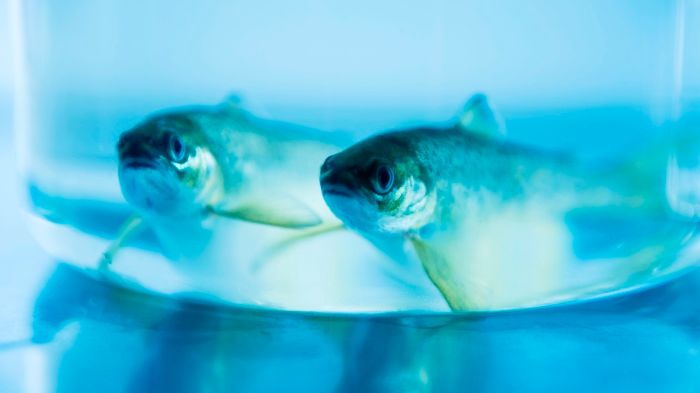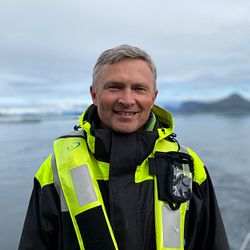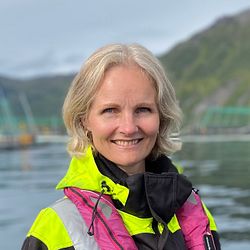
Press release -
Young salmon benefit from exercise
The optimal speed of the water keeps the salmon smolt strong and healthy. This is not only good for fish health and welfare, also the water quality is improved. A salmon swims 24/7.
We have always known that exercise is good for you, but now we know the optimal level of exercise for our young fish. It is the speed of the water flow that determines the exercise or the speed of swimming. The young fish swim against the stream to stay at the same spot, just as they would have done in the river.
- The fitness of the smolt is central for good health, welfare and growth in the sea phase. By ensuring optimal speed of the water flow in all our freshwater tanks across Cermaq, we will improve the exercise as well as the water quality for the young fish, and hence the basis for farming performance in the ocean, says Cermaq’s innovation Manager Dr. Bendik Fyhn Terjesen.
The speed is measured not in km/h but in fish lengths/second. The optimal speed changes through the life-stages as the fish grows. During smoltification, the phase when the fish is acquiring sea water tolerance, the optimal speed is around 2 fish lengths/second. If humans were to do the same, i.e. walk at a step length of 70 cm times 2, this would mean a speed of 5 km/h. If related to a normal height of 170 cm times 2, this would mean we would have to run at a speed of 12 km/h. However, the young fish swim 24/7 in the tank, and there is no rest. Still, this is improving health and performance for the fish. As for us humans, the fish must have some time to adapt to increased exercise, so it is important that the speed of water in the tank is brought slowly up to speed, so to say, and that the fish are not abruptly exposed to the exercise.

Illustration of the variation of water current in a tank. The illustration to the left showsa fish tank with good water speed (cm/s) viewed from the side. This tank was about 14 m wide and the water height about 4 m (2.7 m shown here). The difference in water velocity is indicated with colors according to the scale to the right (data from J Gorle, BF Terjesen., VC Mota and S. Summerfelt (2018). Aquacultural Engineering 81, 89-100, open access).
The water speed is not the same in all parts of the tank and Dr. Harald Takle, R&D Manager Farming Technology, has established applicable procedures to efficiently measure and improve the training regimes in Cermaq’s land and sea-based closed containment systems based on his previous research in Nofima.
Illustration of a sensor to measure the speed
- Stimulating fish exercise by adjusting the water current is essential to strengthen the cardiac capacity, stress tolerance, bone strength and immune capacity of our fish. The result is more resilient and healthy fish, which have stronger muscles with better texture and color, says Dr. Harald Takle.
And if you thought the fish got slim from the constant exercise - you’re wrong. The feed efficiency, measured as Feed Conversion Rate, stays the same despite the constant swimming. The fish is simply more fit and healthy.
Topics
Cermaq is one of the world's leading companies in farming of salmon and trout, with operations in Norway, Chile and Canada. Cermaq is a fully owned subsidiary of Mitsubishi Corporation with head office in Oslo, Norway.



